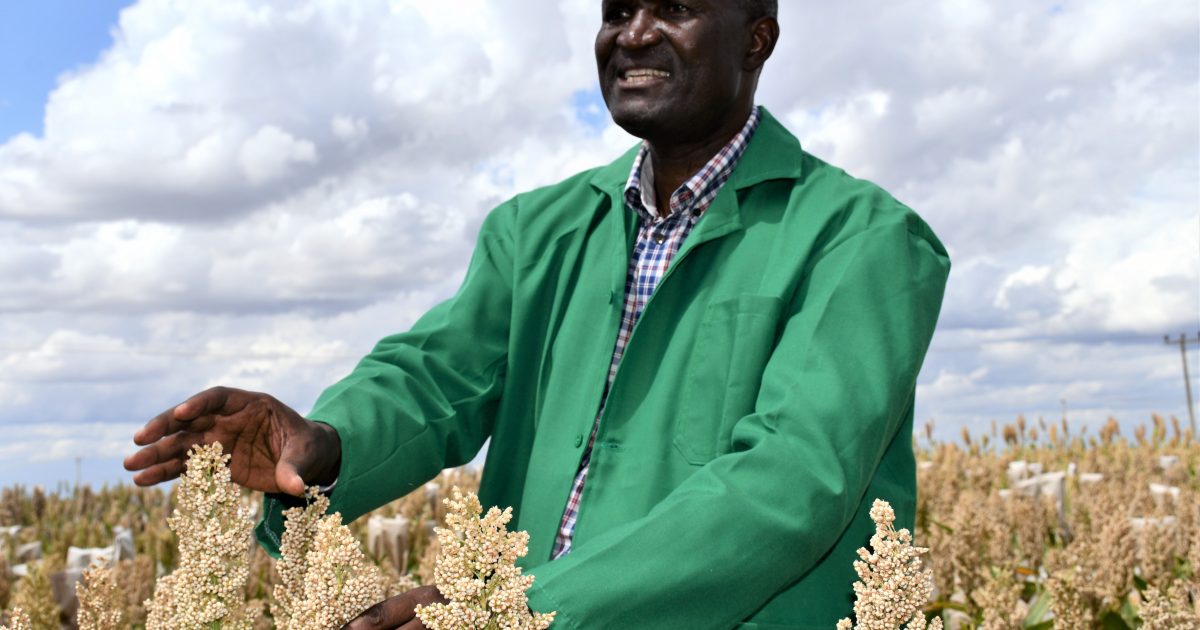Whenever the harvest season is over in the countryside, farmers dry and store in their granaries bags of millet and sorghum. It’s not difficult to guess what these grains are for.
They would be ground into flour. The flour would be used following a similar pattern to maize flour. The molded brown ball may be accompanied with some meaty sauce or vegetables. If not, then porridge might be the end result.
Two renowned chefs from India, the largest millet producer in the world, are in Nairobi to share their cookery arts with some of their colleagues at the Sarova Panafric Hotel.
The specialty of the chefs is millet-based dishes. Surendra Gandharva is the co-founder of Millets Mewar Restaurant in Rajasthan, while Vaibhav Bhargava is a culinary consultant based in New Delhi.
These two chefs have been scheduled from June 17–23, 2023, to assemble a mix of millet-based Indian cuisine. It’s their first time in Kenya.
On display at the event are different kinds of millet from India and Kenya. The varieties are neatly labeled: pearl, amaranth, sorghum, and little. These millets differ in colour and appearance. The little variety resembles sugar crystals.
Even though only four types of millets are displayed, there are many more in existence, such as foxtail, finger, fonio, browntop, and kodo, among others.
A walkthrough at the area hosting the aromatic foods as they cook reveals starters, soups, and main courses. Desserts from the millets, crowns it. As is characteristic of Indian dishes, chilly features generously in virtually everything on offer.
The week-long Indian Millet Food Festival (video) has been organized to mark the International Year of Millets (IYM), whose theme is “Harnessing the untapped potential of millets for food security, nutrition, and sustainable agriculture.”
The festival was launched last Saturday by the Indian High Commissioner to Kenya, Namgya Khampa.
Whereas uses of the family of grasses, covering millet and sorghum, appear to be limited in Kenya, for India, it’s different.
The diplomat said that India was, “delighted to showcase the culinary diversity of India through this food festival.” She added, “We’ll showcase the kind of food you can make in India.”
Gandharva and his colleague Bhargava are here to demonstrate to their counterparts at the Panafric Hotel other tantalising dishes that could be made from the millets.
Bhargava terms millets, “A superfood grown in Kenya and all over the world, and it has sustainably become a talking point in multiple countries now. We are here to showcase various cuisines, with the different varieties of millet.”
Gandharva began his journey with millets in 2003. The chefs are resolute that, as a grain, millets can be incorporated into all salads. Seizing a plate of food during the night of the launch, he said, “This salad has been made entirely from millets.”
Bhargava points at a pot with frothing chicken. “We have used chicken Manchurian and put sorghum into it together with other combined ingredients.”
The Mexican taco is traditional. It ordinarily consists of a small tortilla made from corn or wheat. But at this festival, it’s the millets that are king. They have displaced other grains ideal for tortillas. The millets tortillas are folded around other Indian protein foods and eaten by hand.
Lovers of the normal biryani will likely be attracted to the millet kind. Gandharva recognises that African countries grow lots of millets. The festival is a yardstick for gauging how far the dietary diversity of Kenyans can stretch within millets. “We are working with Kenyan chefs, teaching them how to make millet meals.”
The variety of recipes that these chefs have mastered in India are being disclosed not only to the chefs at the hotel hosting the event but also to visitors.
The guests at the food exhibition during its launch included other members of the diplomatic corps from Jordan, Belarus, Eritrea, and Turkey. These were conducted by the two chefs on a tour to first feast their eyes on the mouth-watering foods undergoing preparation and later to entertain their palates.
The Principal Secretary, State Department for Crop Development, Ministry of Agriculture and Livestock Development, Kello Harsama, said, “This festival gives us a unique chance to celebrate with nostalgia some of our less utilised traditional crops and reminds us why our forefathers cherished these foods.”
Harsama said that the annual millet production in Kenya is 83, 000 tons. He reckons this to be very low compared to the potential that the country can produce. More land should be set aside for the production of millets.
“To increase production, various interventions need to be undertaken. Information and knowledge exchange in such a dynamic sector like agriculture needs to be regular and sustained.”
Maize is the main staple food in Kenya and its consumption has been increasing at 1% annually. “Consumption of sorghums and millets has been low majorly because of eating habits and taste preferences,” said Harsama.
The Indian Millets Food Festival does what the government would wish to propagate. To create demand, the population needs to be sensitised on how versatile these grains from the climate-smart crops are.
The easy-to-digest small cereal grains from the grass family are starchy and protein-rich. They are laced with phosphorus and magnesium. Fibre, potassium, copper, and manganese are also packed in them. Some people are allergic to gluten. Millet is gluten-free. These are just a few of the innumerable health benefits of consuming diets made from millets.
Sustainable Development Goal 2 aims to create a world that’s free of hunger by 2030. According to the Sustainable Development Goals Report, 2022, the United Nations has raised concerns that in 2020, between 720 million and 811 million people worldwide would be suffering from hunger. This was approximately 161 million more than the previous year.
Besides, the UN also estimated during the same year that 2.4 billion people, were moderately or severely facing food insecurity. Children under five years of age have also borne the brunt of inadequate food. 149.2 million people were suffering from stunting in 2020.
Global food supply chains have been heavily disrupted due to the Russia-Ukraine war. The UN terms this as the biggest global food crisis since the Second World War.
In view of such developments on the world scene, Harsama believes that if, “production of millet is widely adopted, the country’s goal of food and nutritional self-sufficiency will be achieved.”
“Millets can help countries like Kenya which have semi-arid parts, in terms of meeting many of their agricultural objectives and essentially contributing to the food baskets of a number of countries in the developing world,” said Khampa.
The Principal Secretary called upon Kenyans to consume more millet products as arrayed by the foods at the festival.
He desires a closer collaboration between the ministry of Agriculture and the county governments so that millet production and processing technologies can speedily be disseminated to farmers.
The Kenya Agricultural and Livestock Research Organisation (KALRO) is one of the leading institutions spearheading the breeding of new varieties that suit different agro-ecological zones. The Kenya Agricultural and Livestock Research Act, 2013, establishes 16 Institutes within the KALRO and 47 Centres and sub-centres.
The International Maize and Wheat Improvement Centre (whose Spanish acronym is CIMMYT) is a non-profit research and training organisation. It collaborates with more than 400 partners spanning over 100 countries which include Kenya and engages in maize and wheat research and farming systems that are related.
Through a resolution in March 2021, following India’s proposal, 2023 was declared by the 75th Session of the United Nations General Assembly as the International Year of Millets. India had observed 2018 as its National Year of Millets.
During the day that the Indian Millets Food Festival was launched, farewell pack of brittle, biscuit-like snacks that those with a sweet tooth, would find irresistible, were handed to guests as they exited the hall that hosted the opening hospitality ceremony.
By William Inganga




